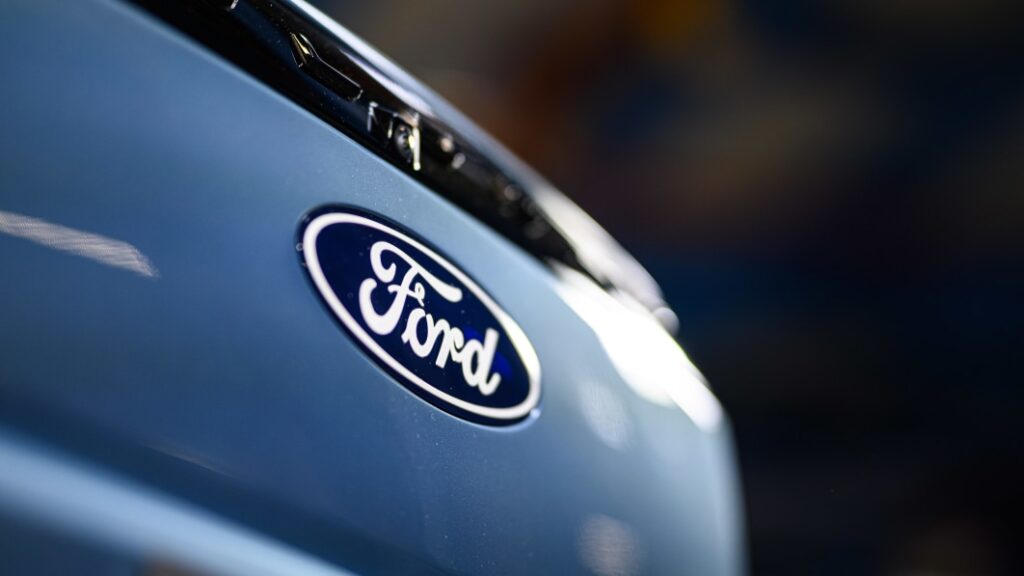Biden's push for EVs collides with Detroit's profit machines

The Biden administration and automakers are in the final stages of negotiating over ambitious new rules to accelerate the electric-vehicle transition that could cost Detroit’s automakers billions and fuel an election-year clash over climate policy.
The White House could enact proposed Environmental Protection Agency regulations as soon as March that would mandate dramatic reductions in tailpipe emissions. The administration proposal would require boosting US EV market share to 67% by 2032 from less than 8% in 2023.
General Motors (GM), Ford (F) and Stellantis (STLA) — the European parent of U.S.-based Ram and Jeep — have warned they cannot profitably transition their truck-heavy U.S. fleets that quickly, according to a Reuters analysis of automakers’ sales data and a review of comments to regulators.
The United Auto Workers, which represents about 146,000 workers at the Detroit Three, has endorsed Biden for re-election. But the union has told the administration its drive for EVs puts jobs at risk.
Automakers endorsed an earlier administration target to boost EVs to 50% of new vehicle sales by 2030. Groups representing auto dealers have joined in criticism of more ambitious targets, citing the slowdown in EV sales growth.
The Alliance for Automotive Innovation, which represents the Detroit Three and other established automakers, said the proposals could expose U.S. automakers to $14 billion in fines for failing to hit the CO2 targets.
Elon Musk and Tesla (TSLA), the U.S. EV market leader, have countered that the Biden proposals should be even tougher. In comments on the EPA proposal, Tesla advocated rules that would push EVs to 69% market share by 2032, and 100% by 2035.
Biden administration officials, industry representatives and environmental groups have been meeting this month, according to White House records.
Volkswagen of America chief Pablo Di Si told Reuters earlier this month “the government has been receptive in listening to us … I hope we’ll see some modification.”
Coming rules
The impending rules also have implications for Biden’s re-election campaign. Michigan, home to thousands of UAW members who build Detroit-brand trucks and SUVs, is a pivotal state in the contest to capture the White House.
Former President Donald Trump has made bashing EVs a key campaign strategy — branding them as a job-killing “hoax” and a capitulation to China.
Ford, GM and Stellantis, in written comments to the agency, have urged the administration to reduce potentially costly conflicts among overlapping regulations administered by the Transportation Department, Energy Department and the state of California. Those conflicts could result in “added costs for OEMs that will impact jobs, capital investments, and ultimately the success of the transition” to EVs, GM wrote.
GM indicated in public comments that new emissions rules should allow for a slower ramp up of EV sales toward the 2032 goal. But GM also said Energy Department proposals to reduce emissions credits generated by EV sales “will result in disproportionately higher compliance costs for GM and the Detroit 3.”
Stellantis criticized the EPA in its written comments for “completely ignoring the market benefit of plug-in hybrid electric vehicle” technology. The automaker plans a plug-in hybrid Ram pickup and currently sells Jeep and Chrysler plug-in hybrid models.
“In a consumer environment that strongly favors light trucks, Stellantis introduced plug-in hybrid technology — a decision that is resonating in the U.S.,” the company said in a statement Wednesday.
The EV price war launched by Tesla last year amplified Detroit’s concerns.
“You will have a bloodbath” as legacy automakers struggle to absorb high EV investment and production costs, Stellantis CEO Carlos Tavares told reporters in February.
Lagging behind
U.S. electric-vehicle market share trails far behind that of Europe and especially China, where 29.9% of vehicles sold in January were EVs or plug-in hybrids.
Non-union Tesla dominates U.S. electric-vehicle sales. The unionized Detroit automakers trail far behind, with EVs accounting for only 4% of Ford’s total sales and 3% of GM deliveries.
Stellantis plans to launch eight battery-electric vehicles in the U.S. by the end of 2024, including an all-electric Ram pickup and two Jeep EVs.
The problem for Detroit brands in meeting Biden’s proposed emissions curbs is their outsized reliance on their largest and least efficient vehicles: mid- and full-sized pickups and truck-based SUVs. Such vehicles account for 46% of GM’s sales and 59% percent of those at Ford, a Reuters review of their 2023 sales by model shows.
Those figures do not include the automakers’ smaller, car-based crossover SUVs. The Ram and Jeep brands exclusively sell pickups and SUVs and accounted for 77% of Stellantis’ U.S. sales last year.
Incentive to pollute
As Detroit pushes back, environmental groups are countering that a climate emergency demands an even stricter mandate for all-electric fleets by 2035.
The Biden administration regulations, if enacted, would mark an abrupt and painful change for Detroit after years of regulations that have incentivized the automakers’ focus on trucks and SUVs by giving these models easier emissions targets to meet.
The rules enabled automakers to build more of the large, heavy, powerful vehicles many U.S. customers wanted and would pay premium prices to own.
All told, pickup trucks, sport utility vehicles, and car-based crossovers accounted for 79% of light vehicle sales in the U.S. market last year. In 1975, 80% of vehicles sold in the United States were sedans, according to the EPA.
The agency, in a statement to Reuters, said the average fuel economy of all U.S. vehicles would be 18% higher than the 26 mpg 2022 average if the fleet had the same ratio of cars to trucks as it had 50 years ago.
Gasoline engines today are far more efficient than those of the 1970s. But automakers have used efficiency gains to provide customers more horsepower or larger vehicles, EPA data show.
Detroit’s automakers now have the lowest average fuel economy among 14 major manufacturers in the U.S. market. All three fall short of the industry average 26.9 MPG the EPA projects for 2023 models.
“Improvements to gasoline power technology have been wasted on moving to larger and more powerful vehicles,” said David Cooke of the environmental group Union of Concerned Scientists.
Tough road ahead
Biden’s proposals could require the Detroit automakers to undertake extensive product or technological overhauls to comply.
GM had eschewed hybrids for the U.S. market as a waste of resources. In February, however, GM Chief Executive Mary Barra said GM is now working on plug-in hybrids for the U.S. market in response to rising sales of hybrids.
Both Ford and GM have struggled to sell their full-sized EV pickups. Ford in January cut 2024 production of the F-150 Lightning to one shift, reversing earlier plans to accelerate to three shifts daily.
GM’s new Silverado EV sold just 461 copies last year.




